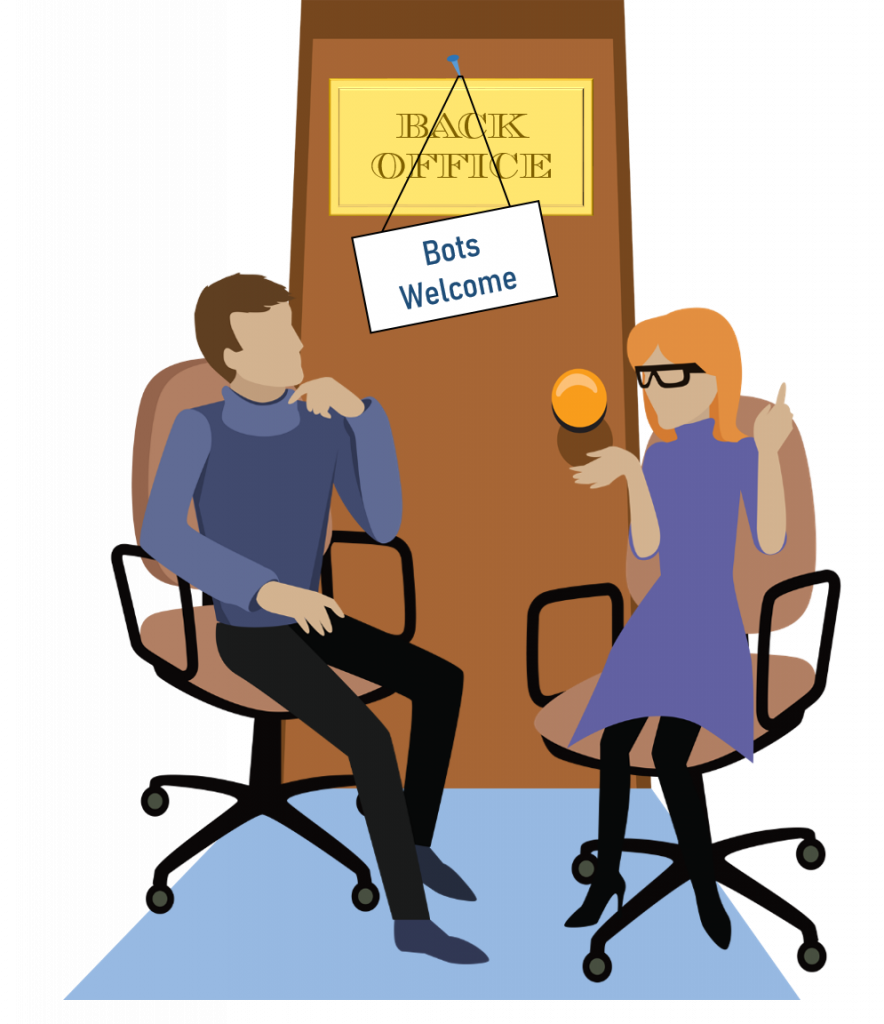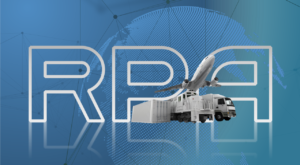Robotic process automation (RPA) is one of the most controversial subjects in today’s business environment. The controversy isn’t about whether RPA is effective at handling rules-based processes — it is — but whether it’s going to eliminate millions of jobs. So what is RPA? Gartner’s Paul Delory explains, “The core of robotic process automation is really simulating the workflow, or simulating the process that a person would go through to execute a task. It’s really all about recording a macro, or some sort of script where the robot can go and click on a button, enter in some text, do all of these things, really simulate what a human would do.”[1] This type of work is sometimes called “swivel chair” work because it requires employees to move data from one system to another. Allan Surtees, head of IT at Gazprom Energy, explains, “It’s what they call ‘swivel chair’ work — clicking on multiple systems, getting data from one source and putting it into another, where people are actually stuck four or five hours a day just doing this boring, manual nonsense.”[2] Currently, there is a lot of swivel-chair work being done in back offices. Delory observes, “It turns out in our back-office processes there are a lot of cases where we want to take data out of one Excel spreadsheet, and put it into a different Excel spreadsheet, or we want to get information out of an email, and put that into an internal system; it’s these kind of low-level tasks, the paperwork, really, that RPA can really help with.”
Tedium can spawn back office errors
Few people enjoy spending hours doing tedious work. They get bored and boredom can lead to errors. Rehan A. Shaik notes that data entry tasks — some of the more tedious jobs performed by humans — are ripe for process automation.[3] She explains:
“Robotic automation is all about finding repetitive tasks, often with high volume, and automating them. The best example of this is data entry. Instead of using a human to input the items, software robots are programmed to do the tasks independently. In the past, organizations needed to employ entire teams assigned to inputting critical data that could then be used for analysis and to make critical business decisions. With robotic process automation, algorithms are assigned based on uniform things that happen and actions are then determined. Predictable tasks are targeted and then assigned actions based on the needed outcome. Instead of an employee typing in every detail, robotic software streamlines it and removes the need for an actual person to do it all.”
Since computers don’t get tired or distracted, the result is fewer data entry errors. Error reduction is one of the primary reasons businesses are turning to RPA.
RPA and jobs
As I noted at the beginning of this article, RPA is controversial because some analysts have predicted it will eliminate millions of jobs. As Delory observes, “The first question everybody has is, Is a robot going to take my job? Right?” His answer is, “If you’re a professional in a developed economy, the answer is almost certainly no.” Read between the lines and the implication is clear that some jobs will be eliminated — such as, data entry jobs that have been outsourced to developing countries. In many back offices where swivel chair work is still done in-house, data entry is only one of many tasks being accomplished by employees. In those cases, RPA is likely to be welcomed by employees. Chris Huff, chief strategy officer at Kofax, explains, “[RPA is] not about replacing jobs. It’s more about handling mundane or time-consuming tasks in a more efficient manner to enable your teams to spend more time concentrating on meaningful work. This ultimately helps build morale within your organization while also making it more productive.”[4]
To determine whether RPA could benefit your business, Huff recommends doing five things. They are:
- Assess your current situation. “Examine your processes, tools and workflows to determine what’s working well and what might need to be tinkered with before introducing RPA. If you find processes or workflows that are particularly time consuming and eat up large chunks of human work hours, they might be strong candidates for an RPA solution.”
- Benchmark your existing processes. “Gauge the efficiency of your current processes by looking at things such as the average cost of invoice processing or how long it takes to onboard a customer. Whether good or bad when compared with industry standards, the goal is to blow those standard numbers away with automation.”
- Identify your RPA use cases. “Which processes within your organization are ideal candidates for robotic process automation? Which require complementary solutions such as document capture and transformation or process insight and improvement?”
- Organize and prioritize your use cases. “Determine your highest-impact use cases and aim to first deploy RPA in ways that will maximize productivity gains and ROI.”
- Launch your proof-of-concept project. “In most situations, this is a relatively simple use case that delivers high impact.”
If your business has any candidate processes for robotic process automation, you should make the decision to move ahead. Delory asserts RPA implementation is inevitable. He states, “These products are being deployed. They are providing real value to the business, so I don’t think you can stop it.”
Beyond RPA
In talks with clients, I’ve found they often want to go beyond RPA to what I call Cognitive Process Automation™ (CPA). Cognitive Process Automation goes beyond the accomplishment of routine tasks. CPA has the potential to improve, not just automate, processes by dynamically analyzing and executing subtle decisions as if they were made by the best human expert. Technology expert Manish Rai (@manishrrai) writes, “One aspect of RPA is raising corporate eyebrows even higher. Cognitive automation. Almost half of enterprises implementing RPA in the [near future] will be doing so with cognitive capabilities.”[5] He continues:
“Most of the enterprises deploying cognitive automation started with traditional RPA, which automates simple, repetitive tasks that can be easily replicated by instructing a software robot (bot) to copy keystrokes or follow a set of clear-cut rules. But often, businesses find themselves limited because traditional RPA can only handle structured data — the kind of data that comes from a spreadsheet or database or standardized forms, whether paper-based or electronic. And so much corporate data is non-structured. It’s also called ‘dark data,’ because it is largely ignored by companies. But it includes important information like that found in emails, videos, social media, audio recordings of meetings, even handwritten notes. According to IDC, nearly 80% of data generated or collected by businesses is dark data. Because of this capability to process unstructured data, cognitive RPA actually accelerates the already-significant returns that enterprises get from RPA — achieving ROIs of up to 300% in months, according to McKinsey. And what’s especially attractive about cognitive RPA is that the intelligent bots learn over time.”
Concluding thoughts
Michael Baxter (@michaelbaxter_) claims, “RPA is a software category that is driving seismic change across the international workplace.”[6] That’s a pretty bold statement. He explains, “By getting the RPA strategy right, organizations will achieve even greater shareholder, customer and employee value — such as efficiency savings and increased productivity. They will also experience unexpected returns that may include; discovering much better regulatory compliance, faster delivery of new products to market, enhanced customer service and increased employee skills and satisfaction.” For employees laboring in back offices whose tasks include swivel chair work, RPA and CPA will provide welcome relief from the tedium. For businesses, RPA and CPA will provide both improved efficiency and greater accuracy.
Footnotes
[1] Conner Forrest, “What is robotic process automation and why does it matter to your business?” TechRepublic, 5 November 2018.
[2] Linda Tucci, “Robotic process automation software: Find the right target,” TechTarget, 31 July 2016.
[3] Rehan A. Shaik, “Managing Data Tasks with Robotic Process Automation,” CIO Dive, 10 October 2016.
[4] Chris Huff, “5 steps to getting started with robotic process automation,” Information Management, 20 December 2018.
[5] Manish Rai, “RPA is Hot but Cognitive Automation is Hotter,” Automation Anywhere, 16 April 2018.
[6] Michael Baxter, “Will a new Robotics Process Automaton standard be an RPA trend in 2019?” Information Age, 7 January 2019.





